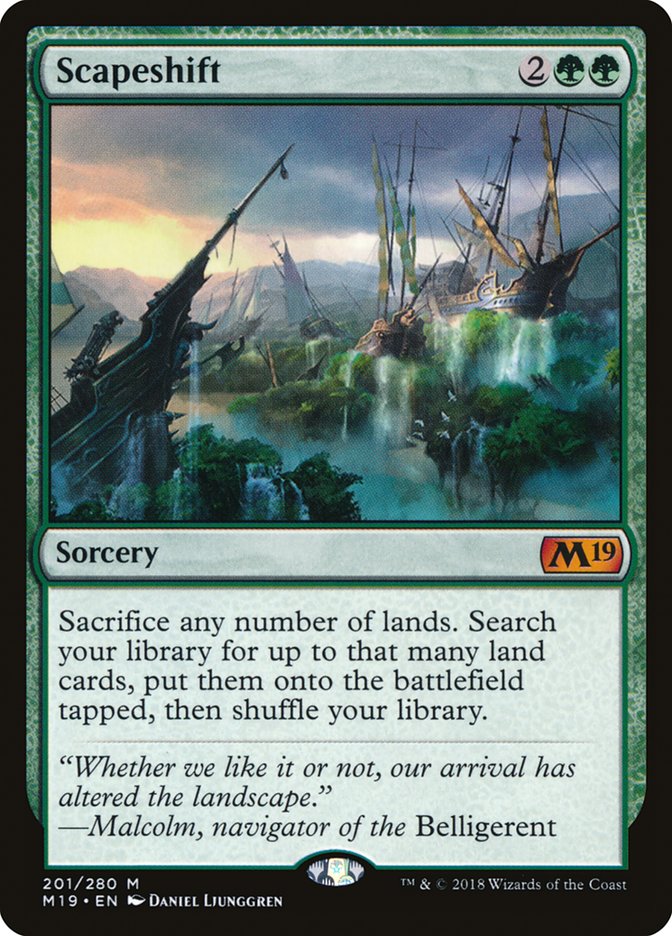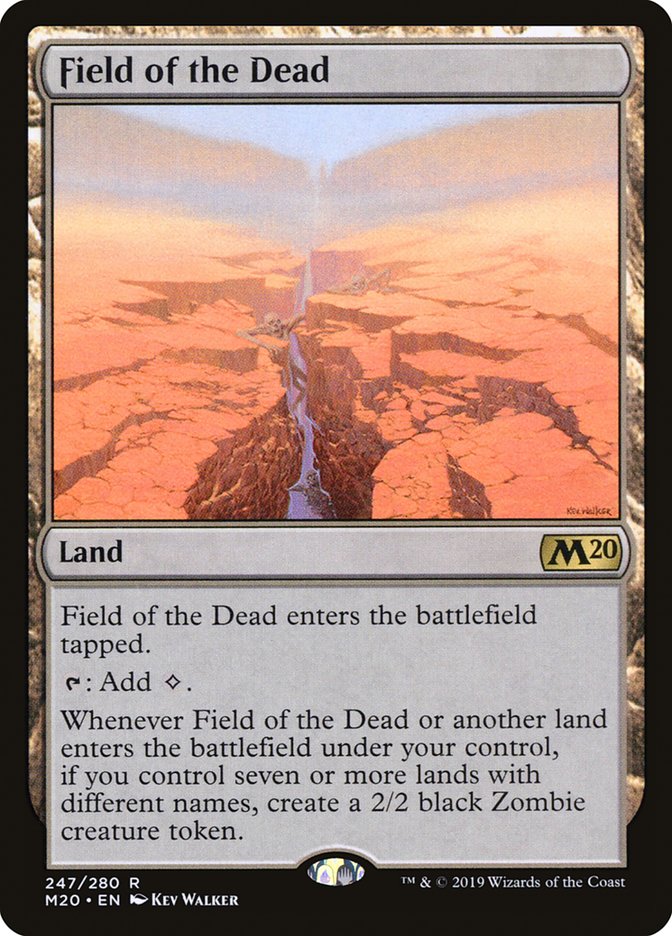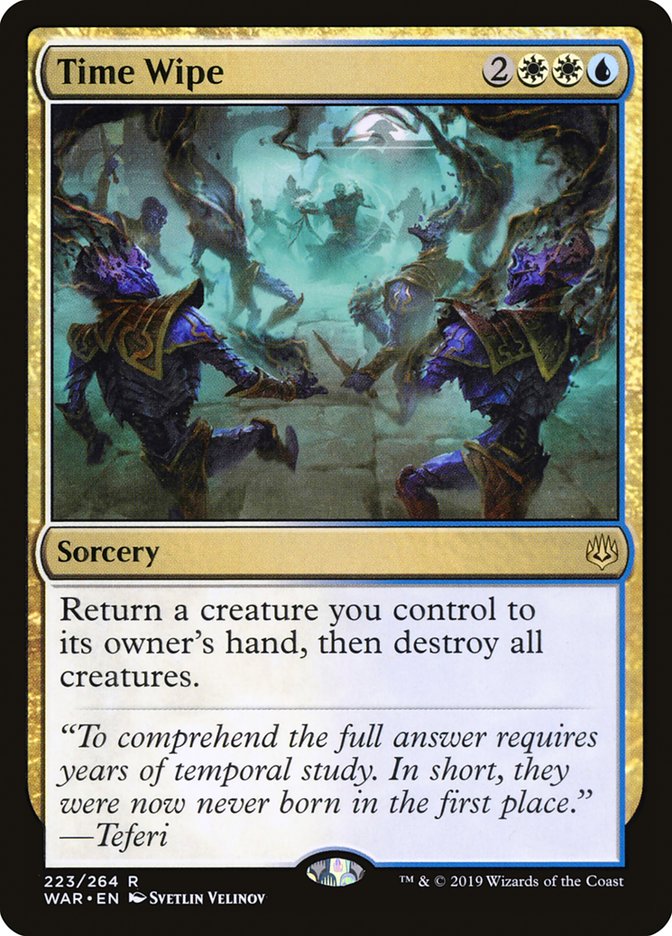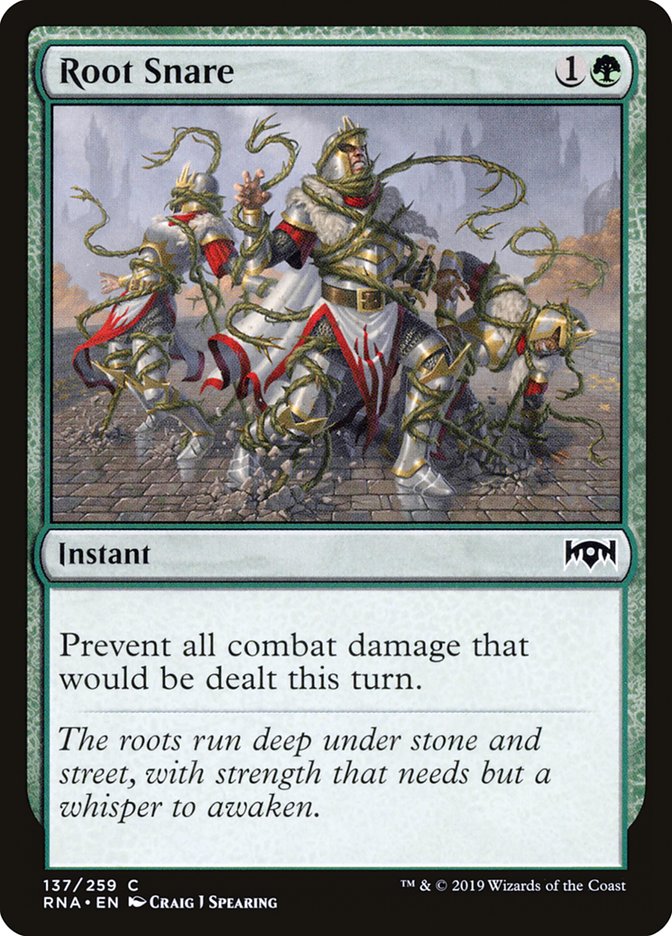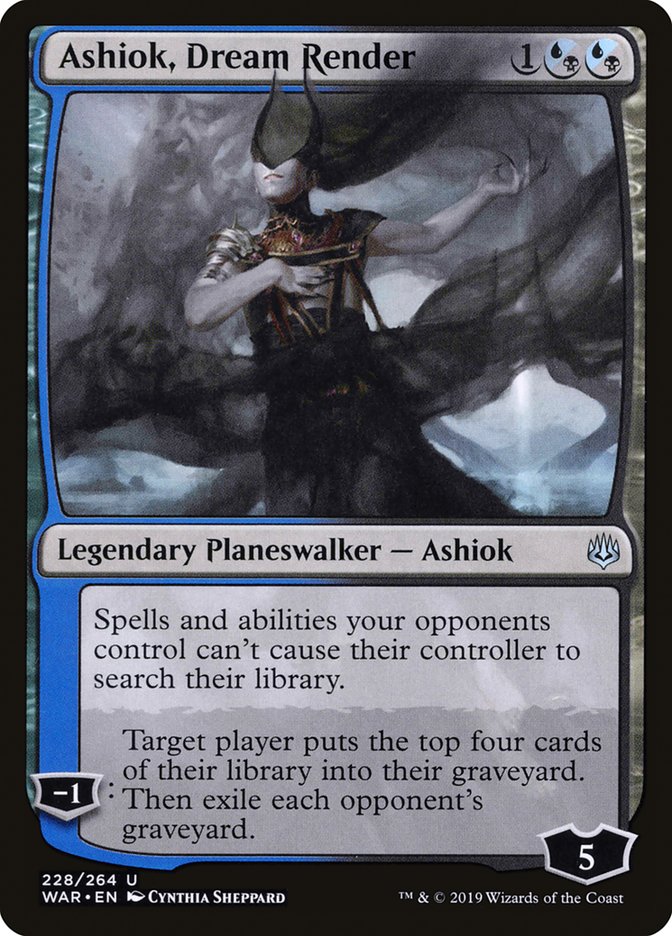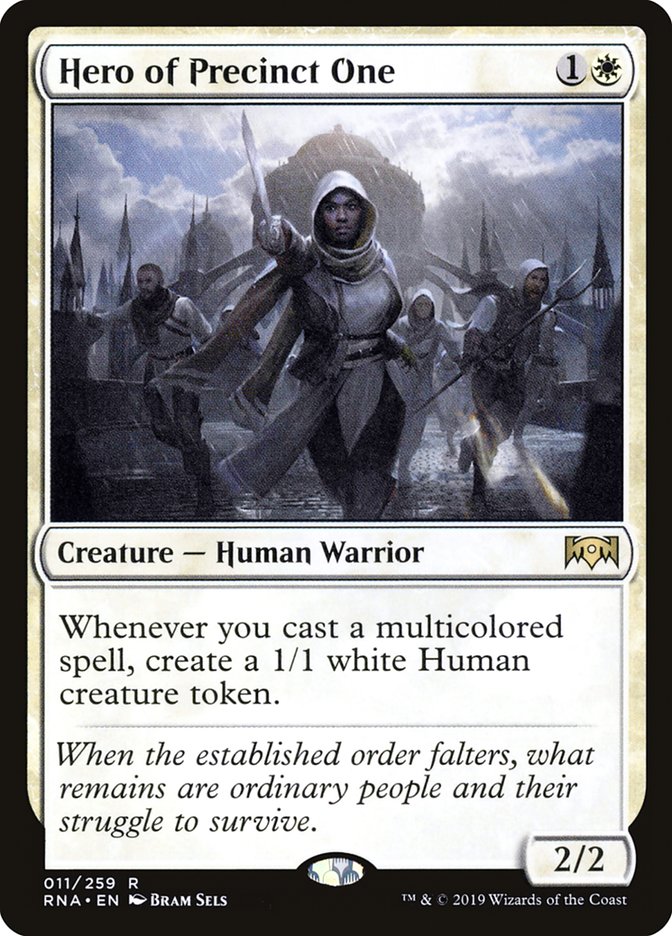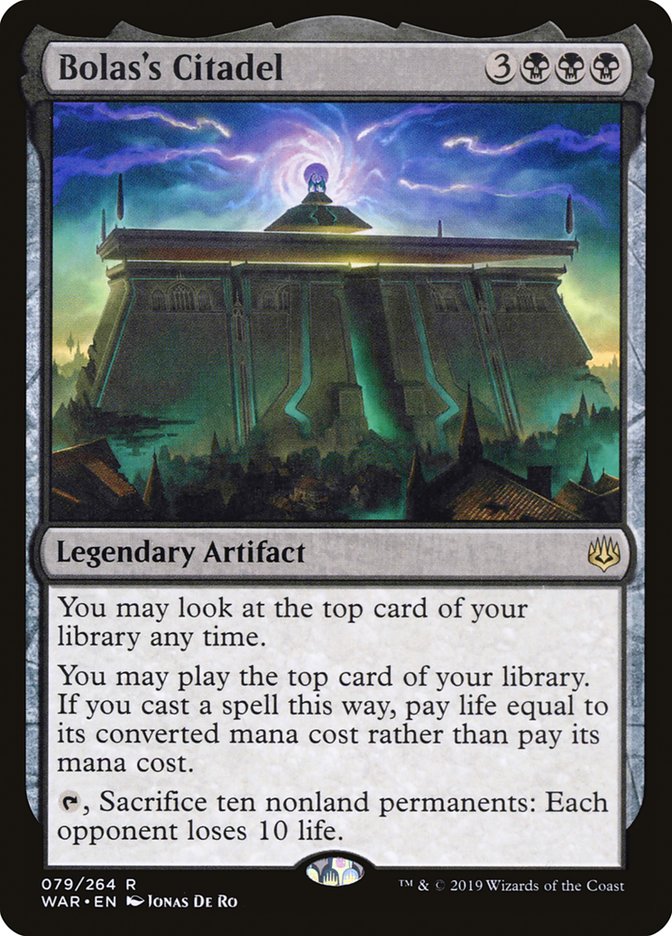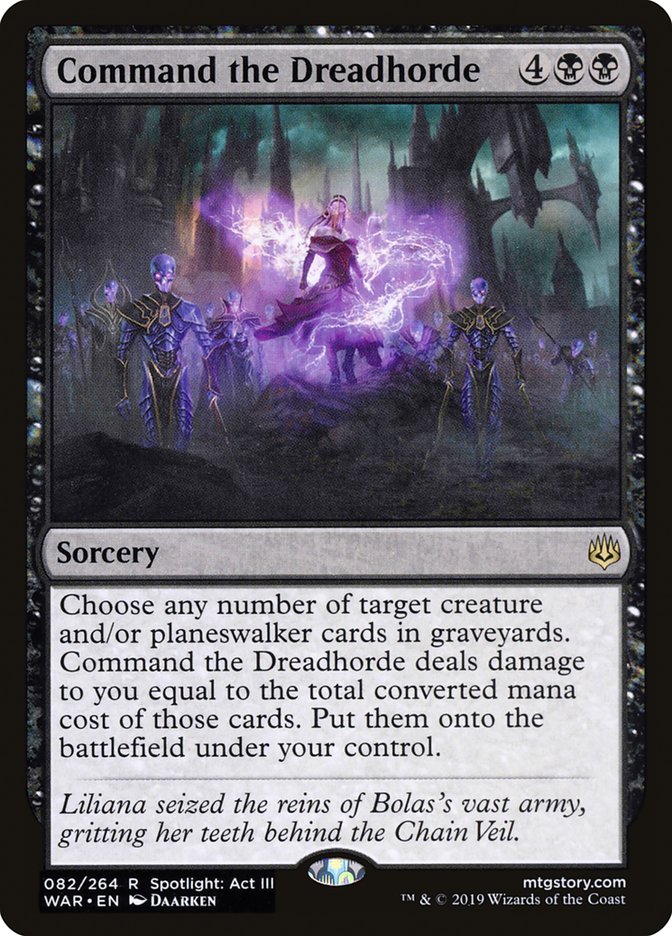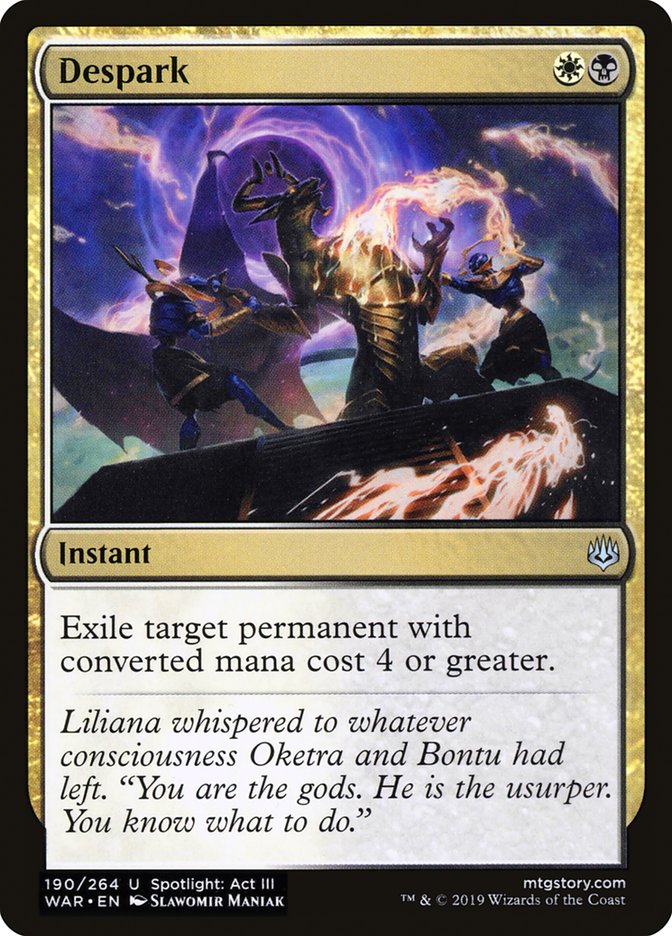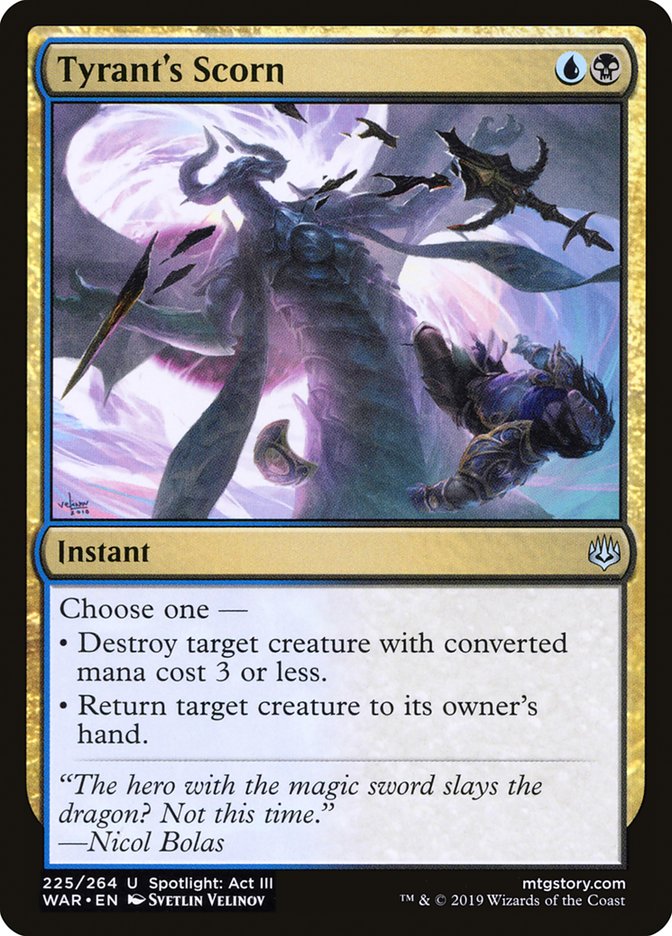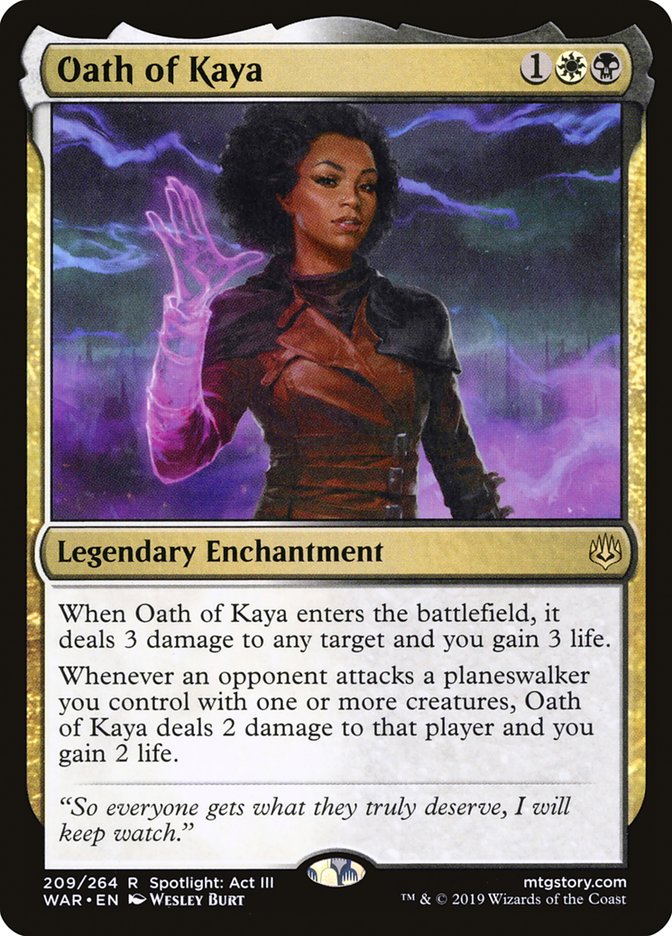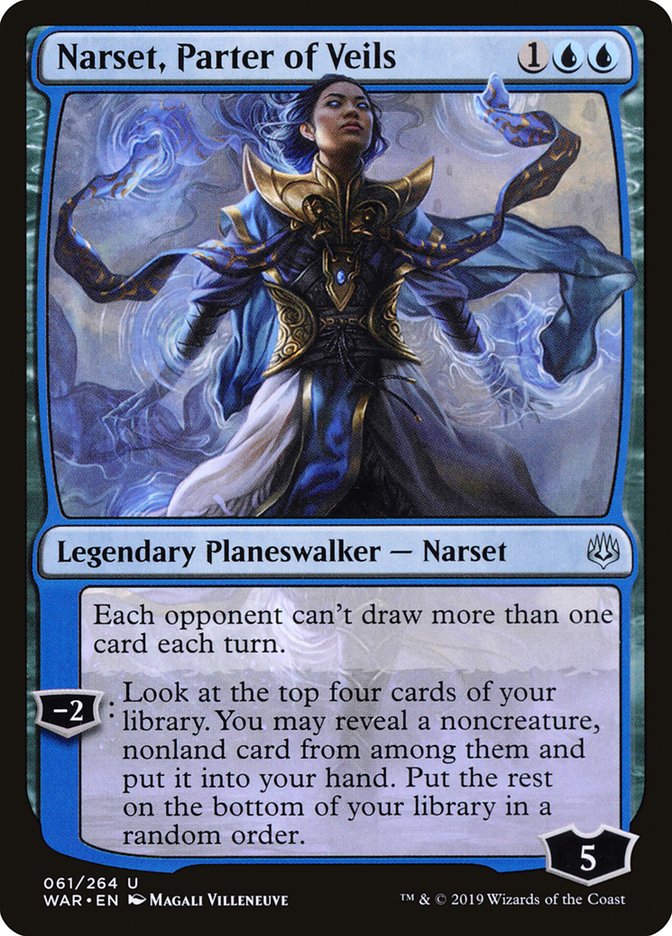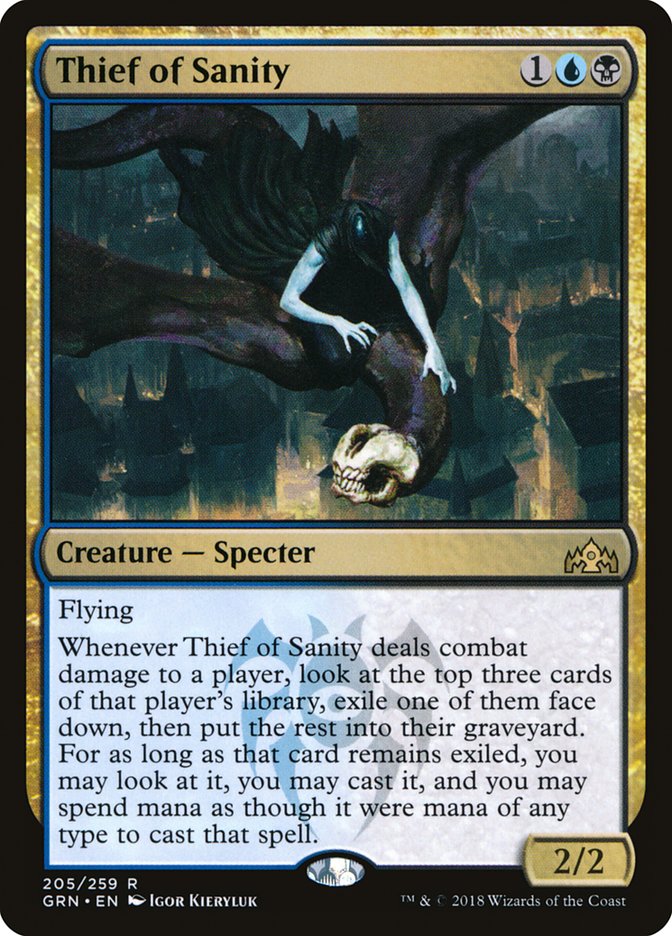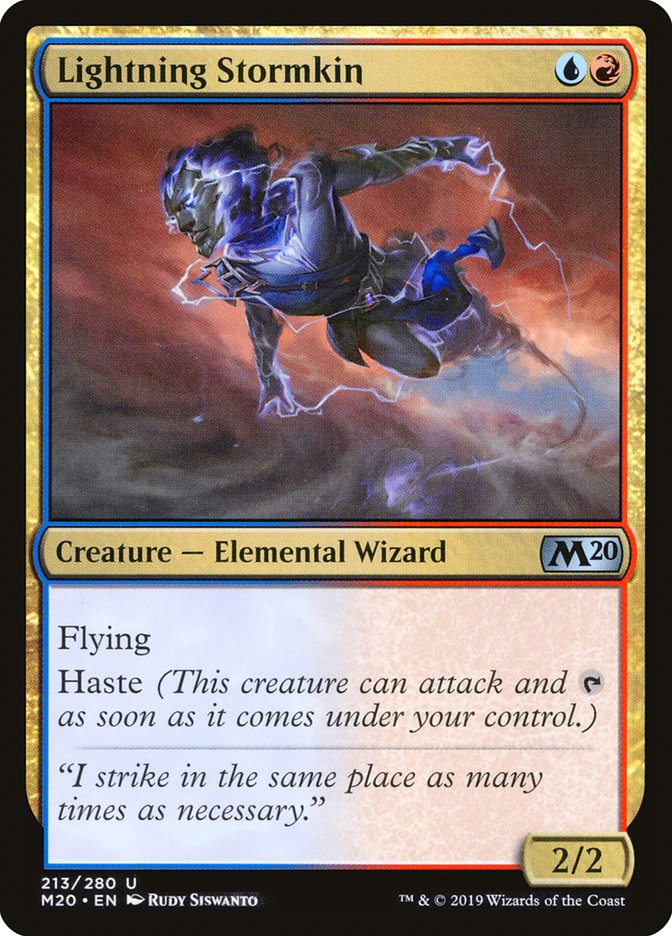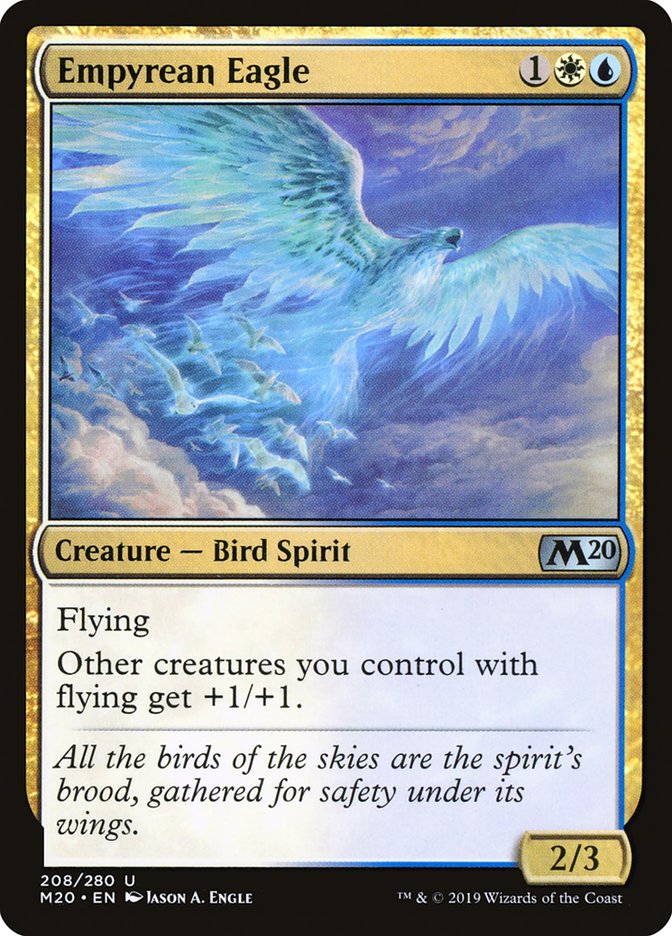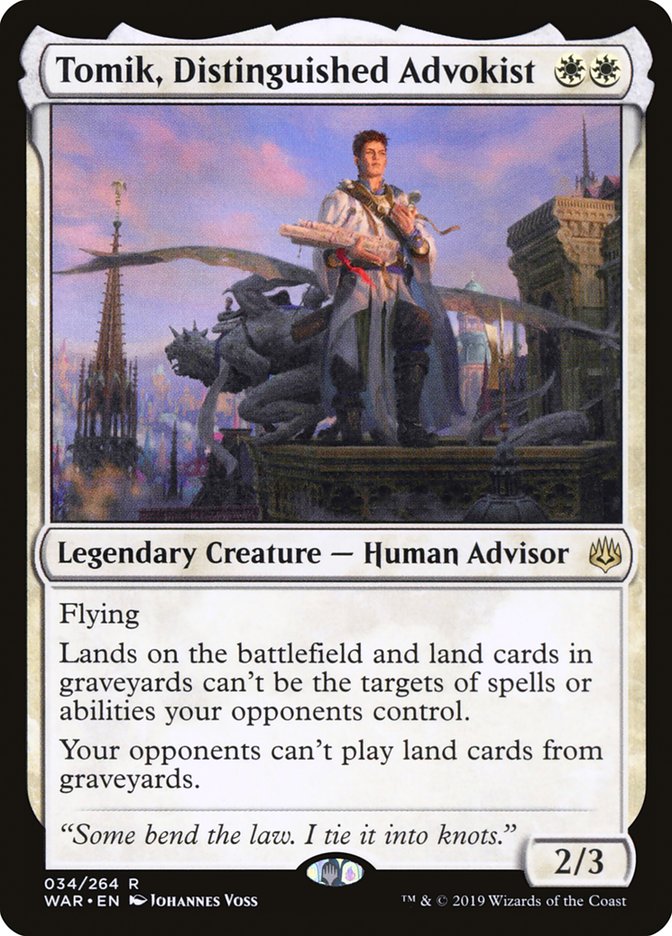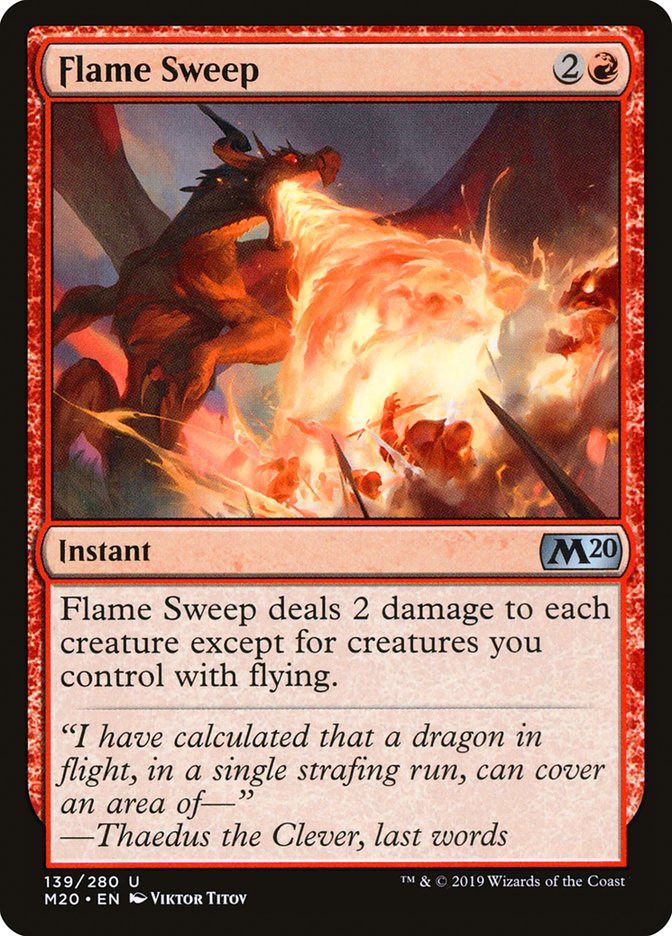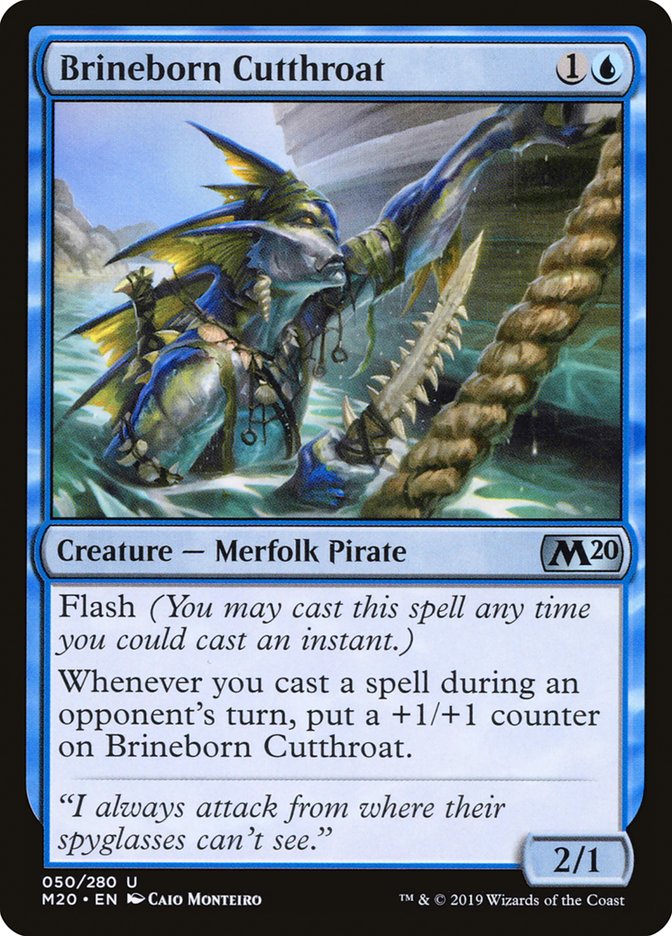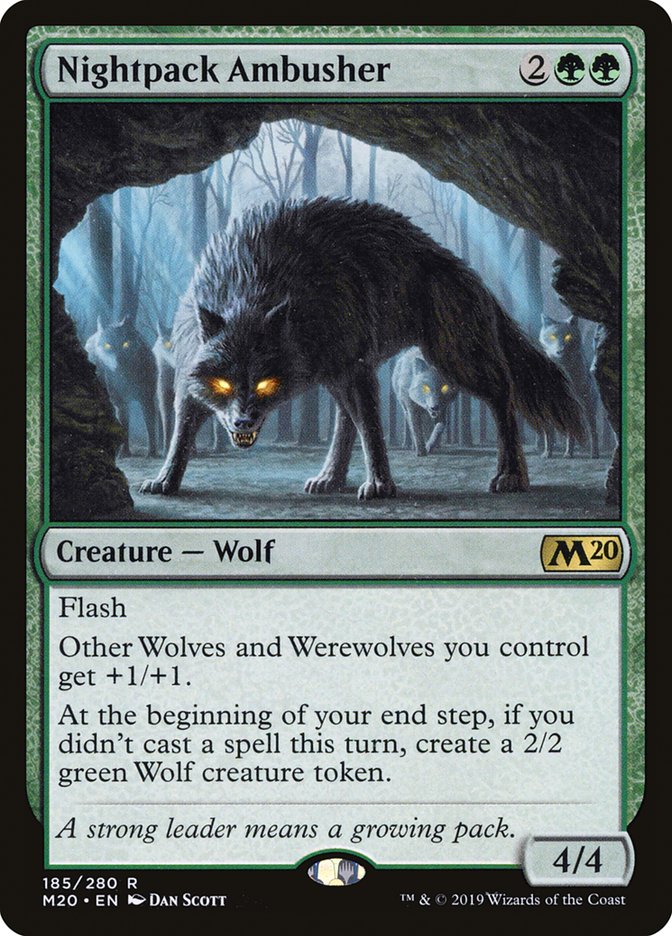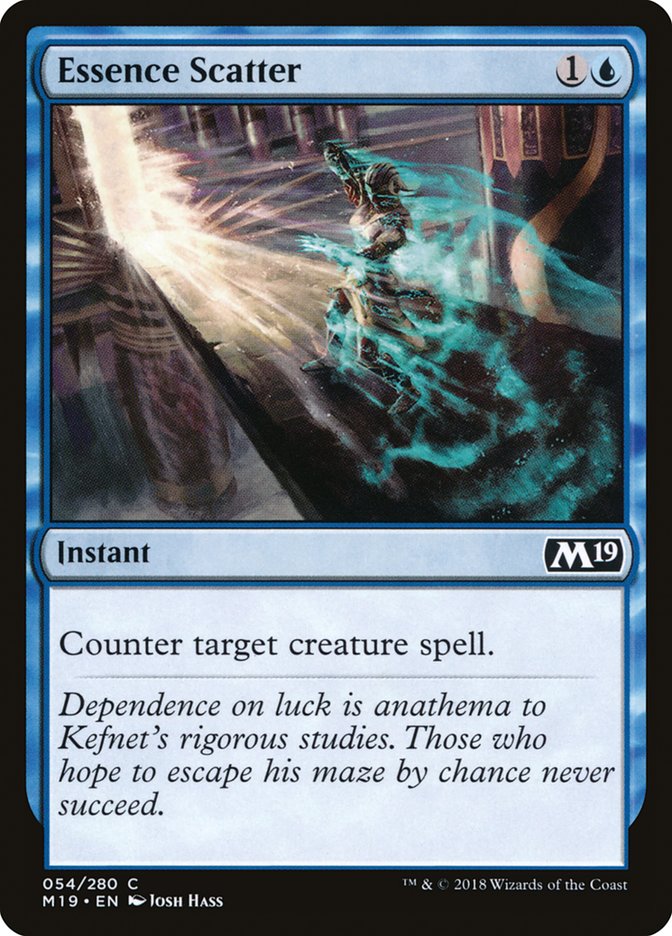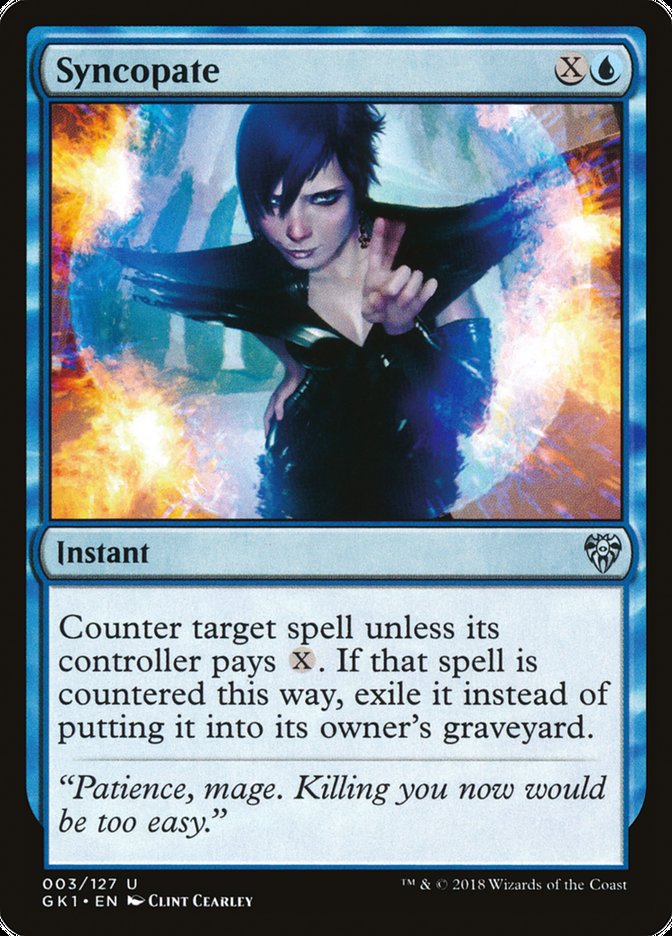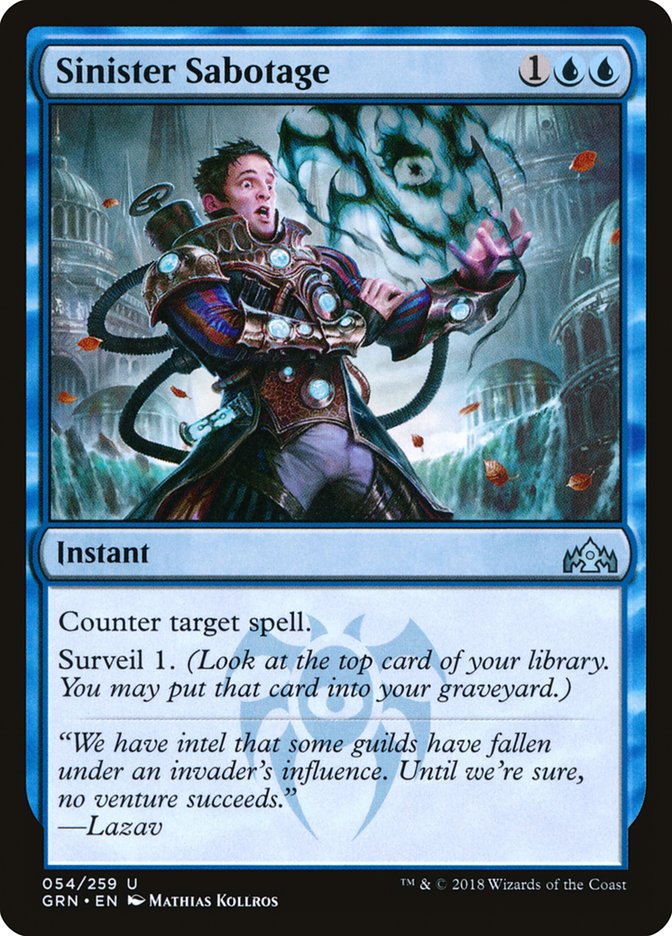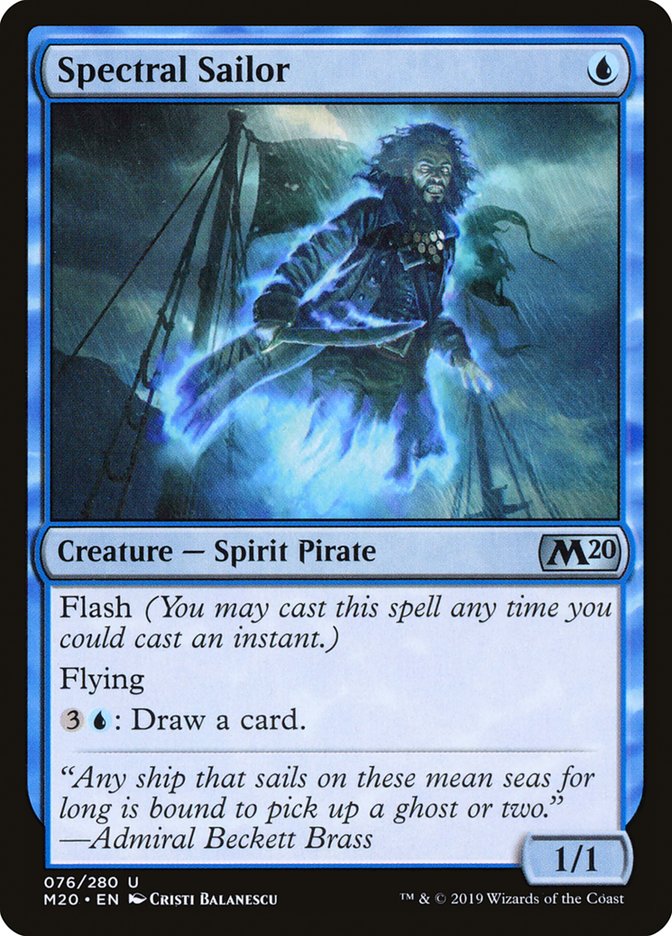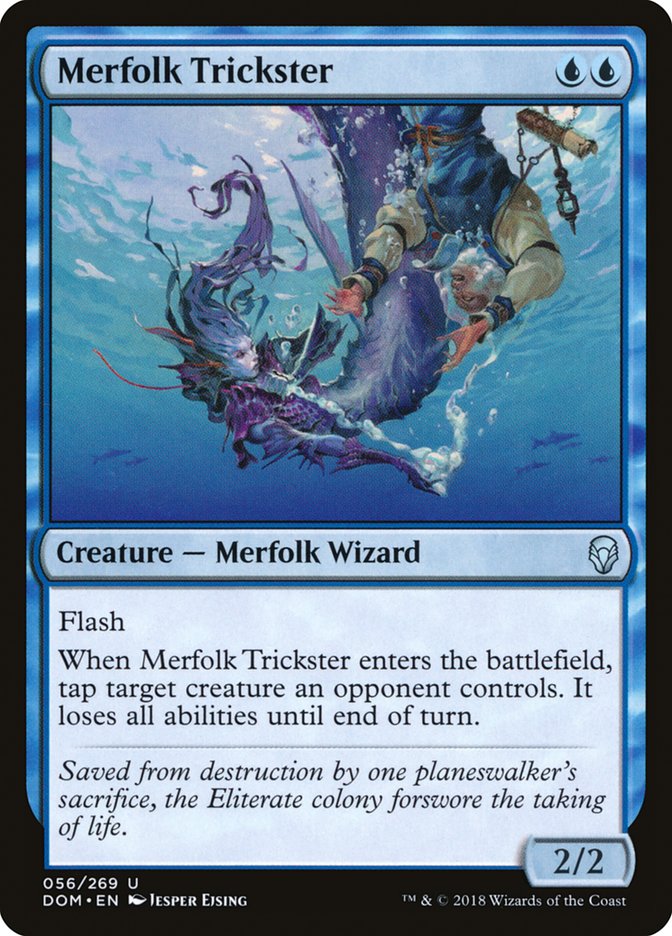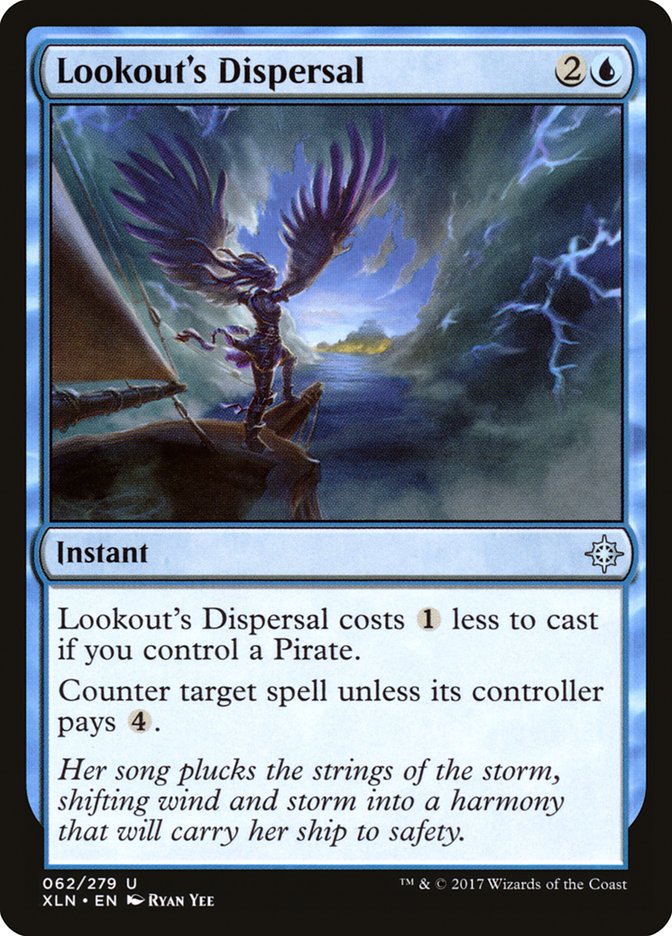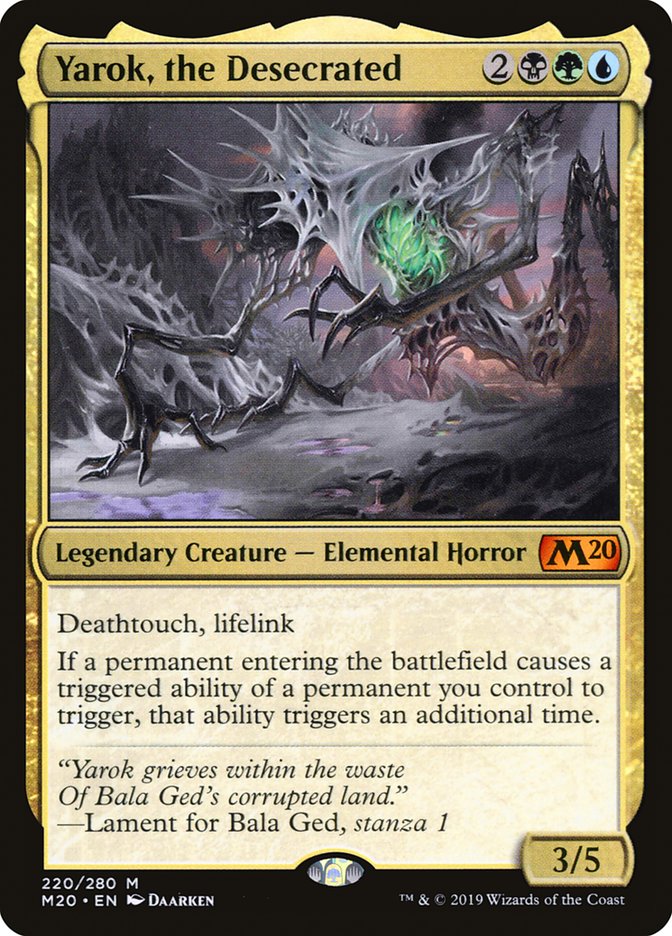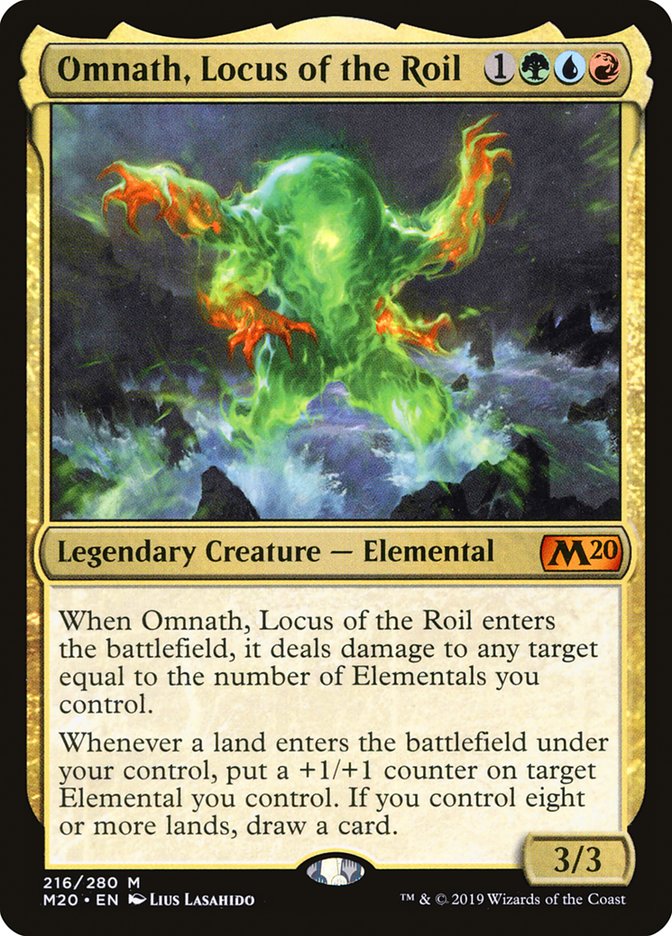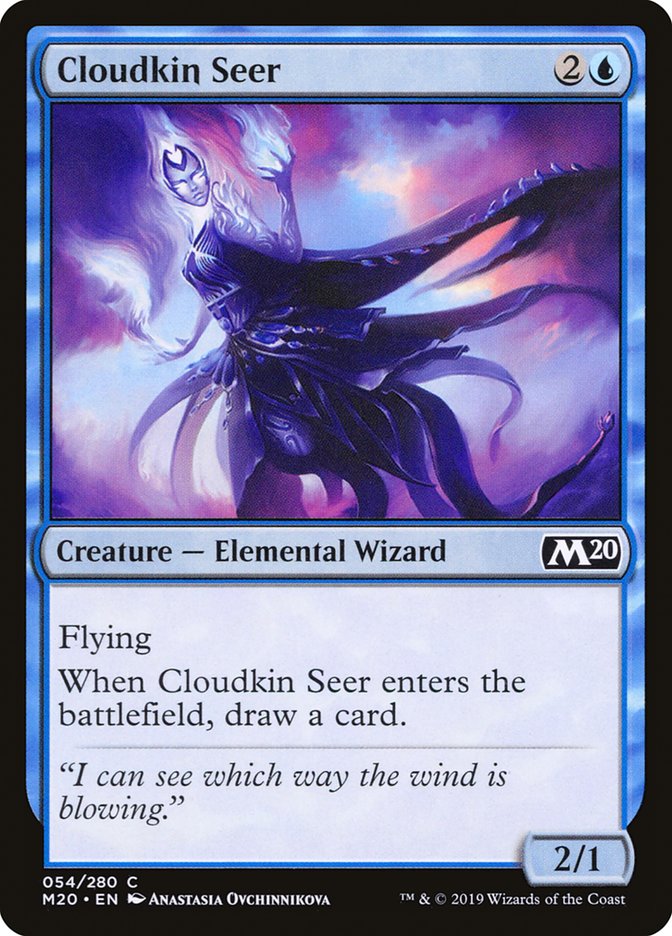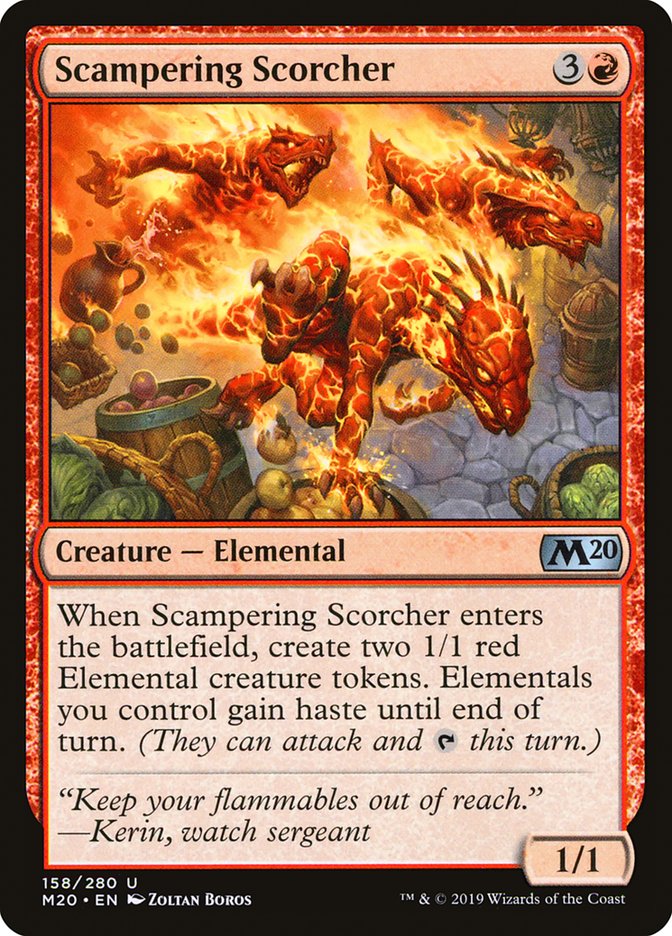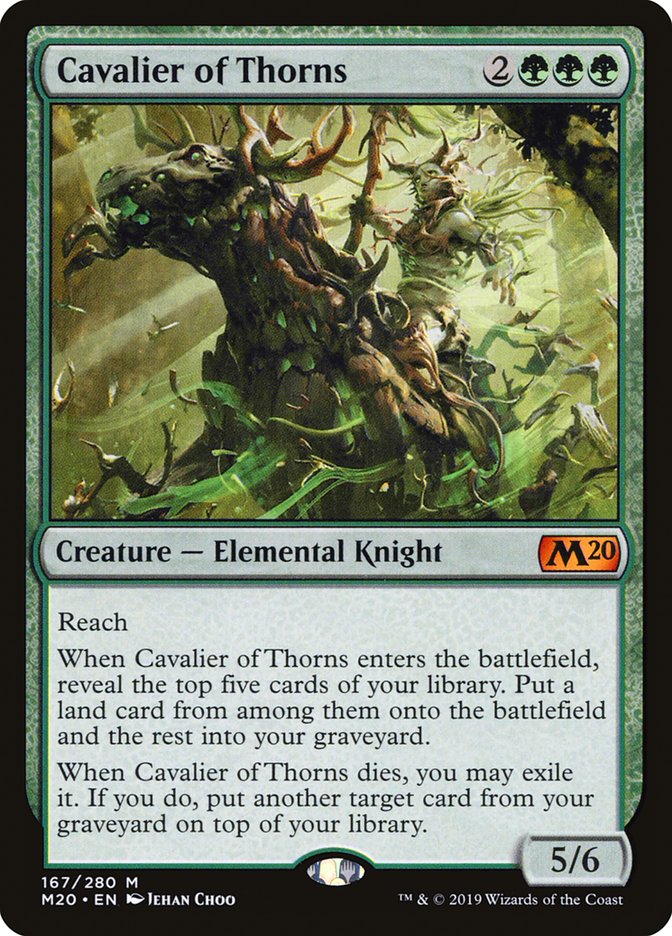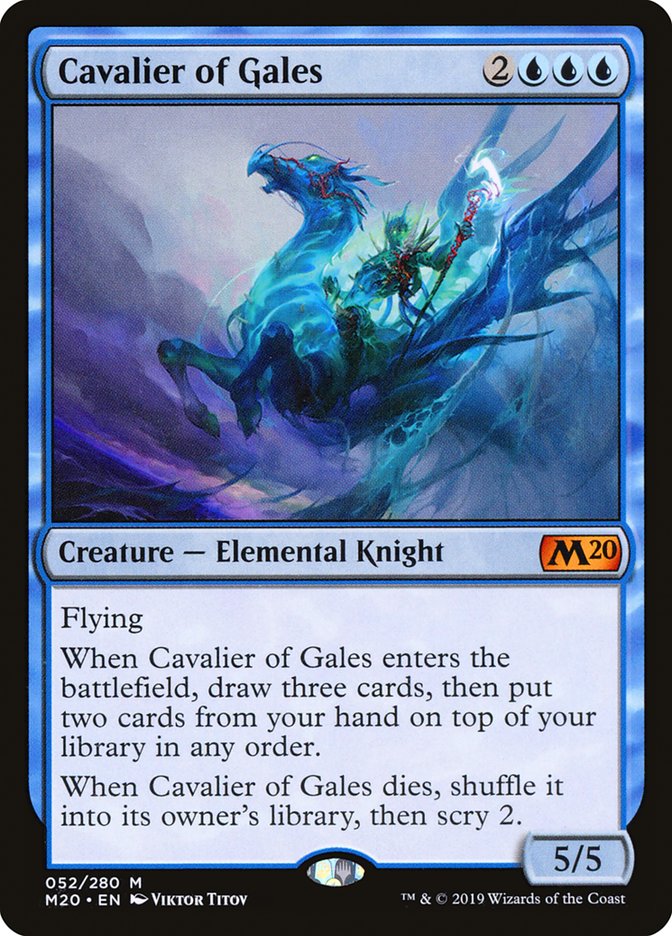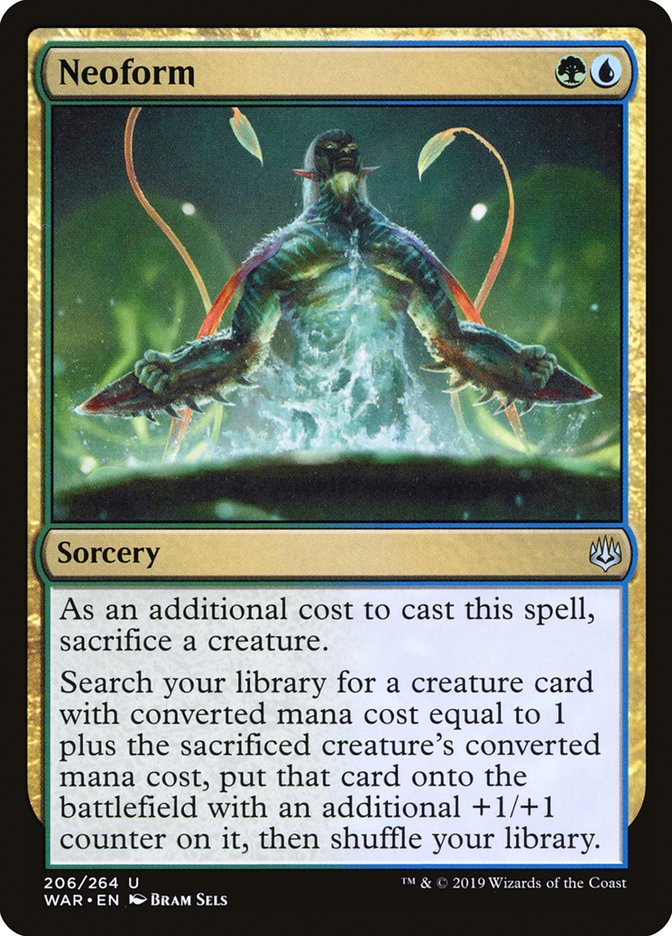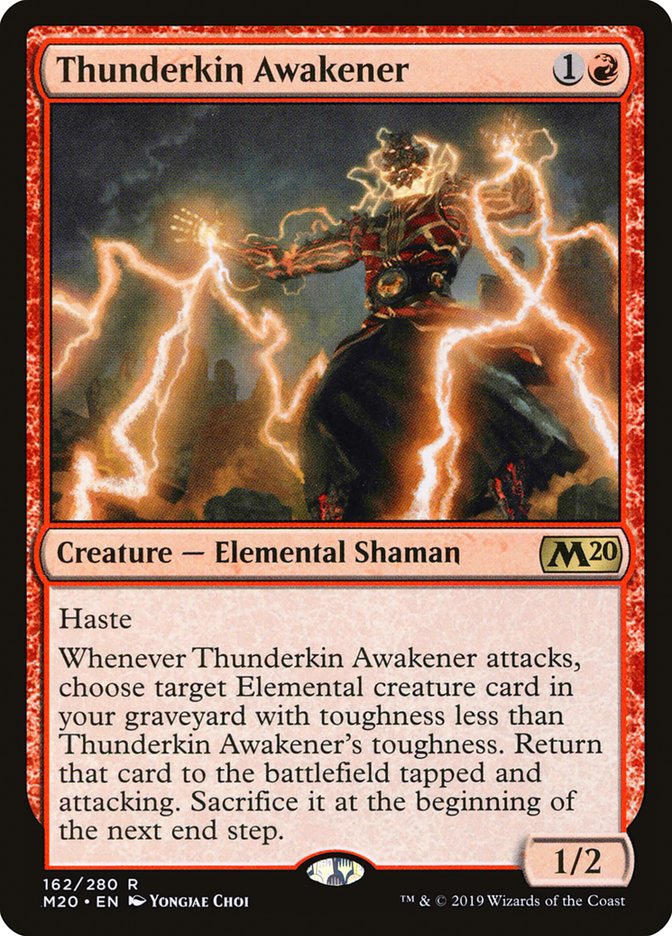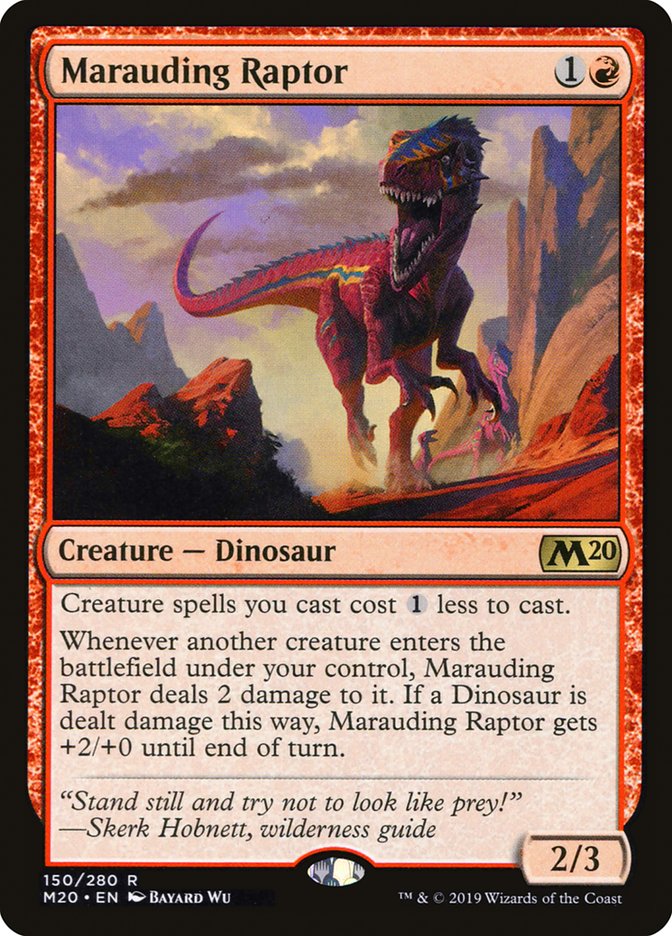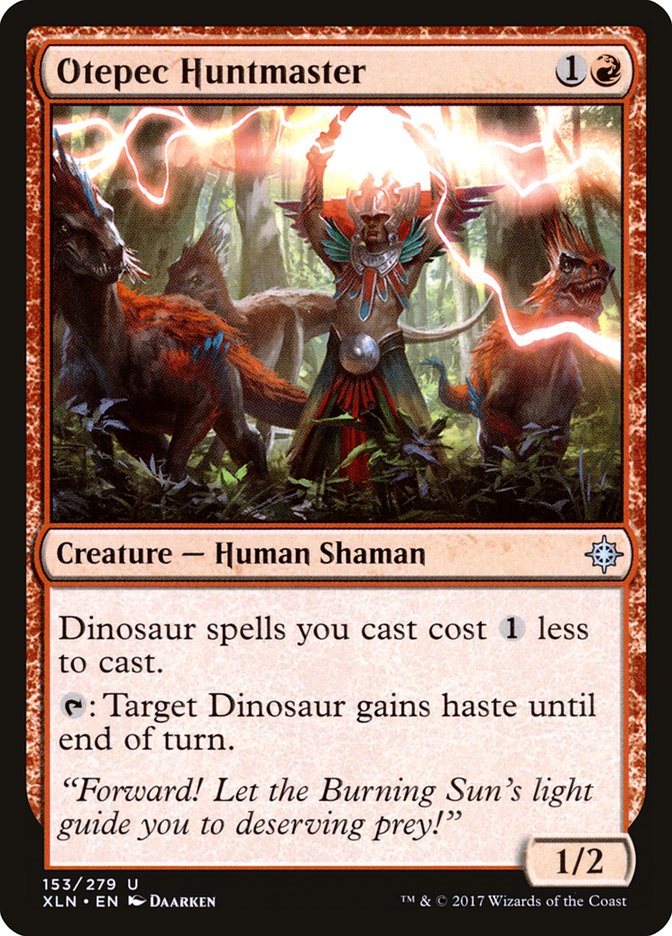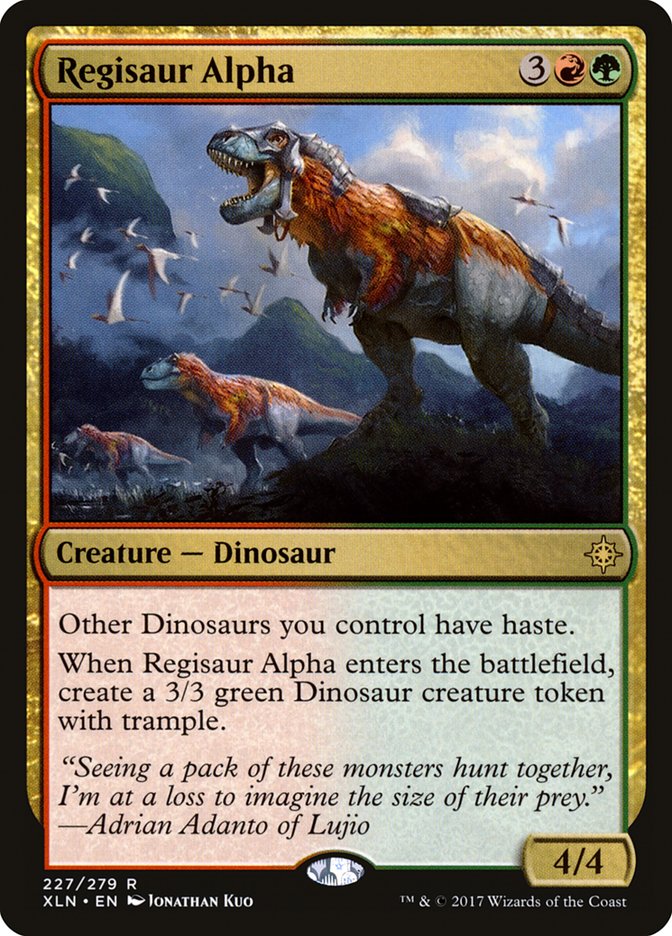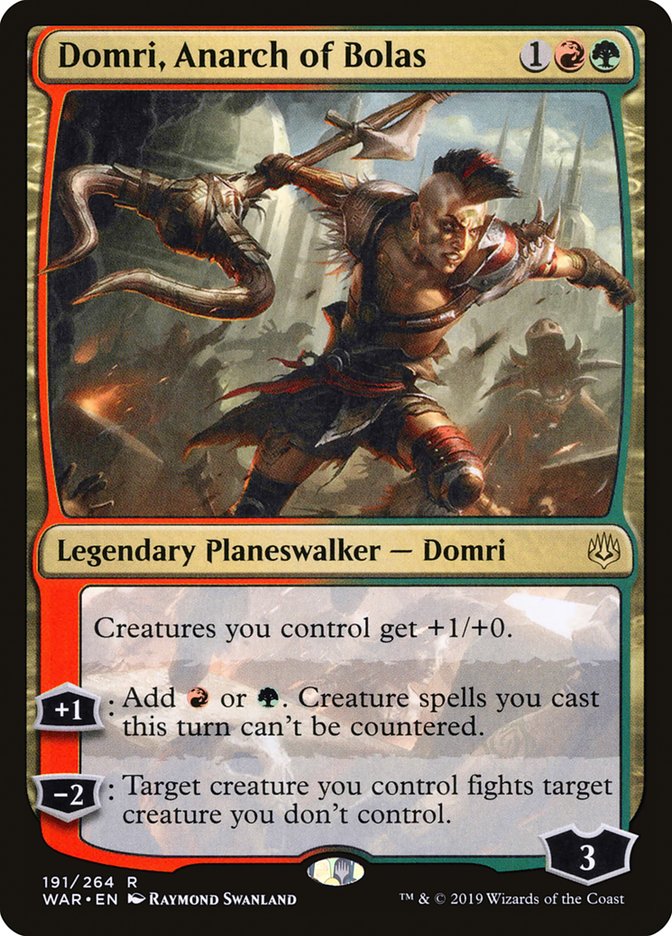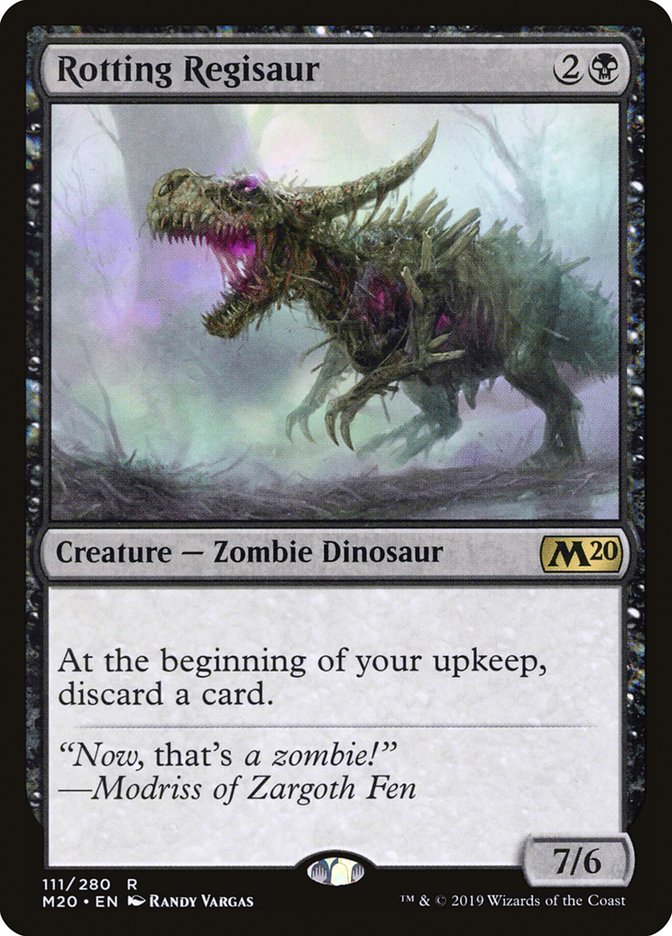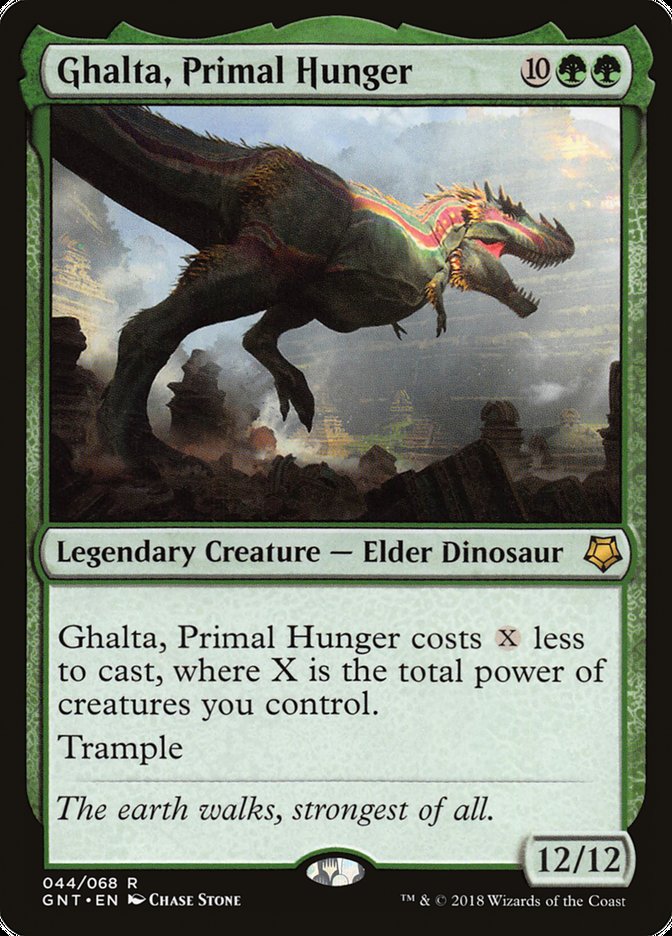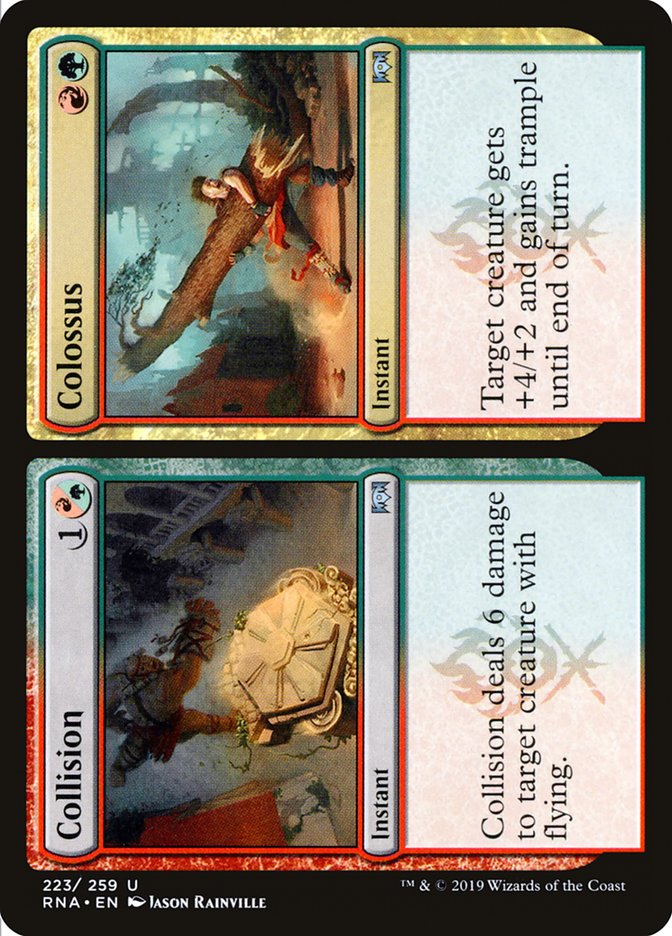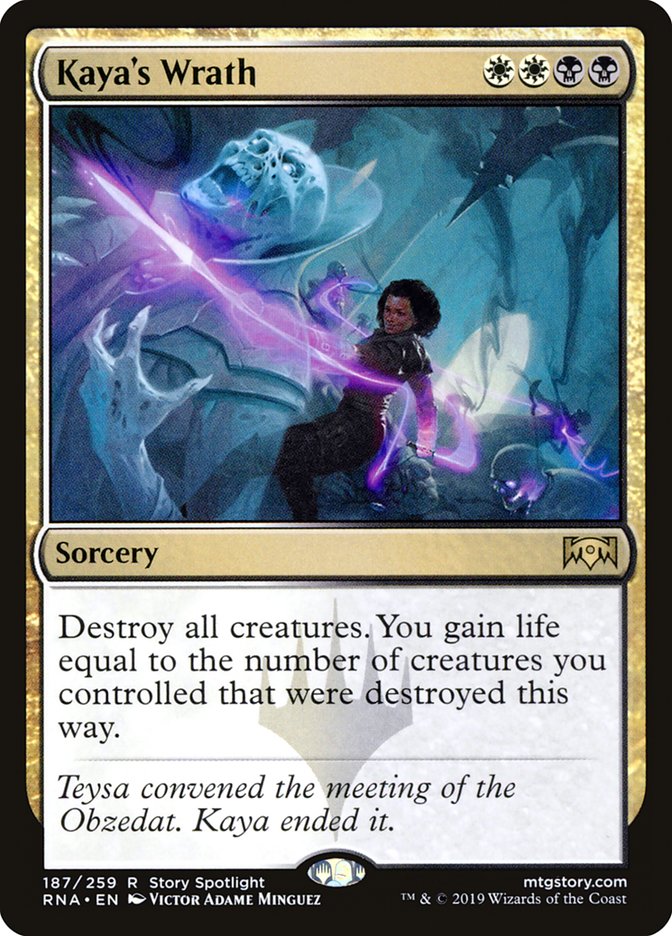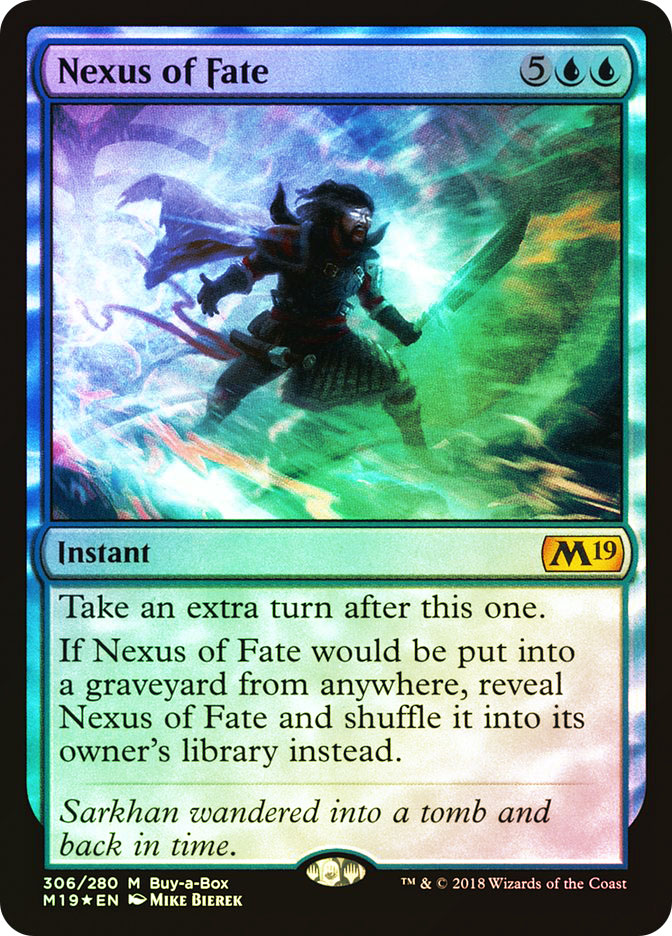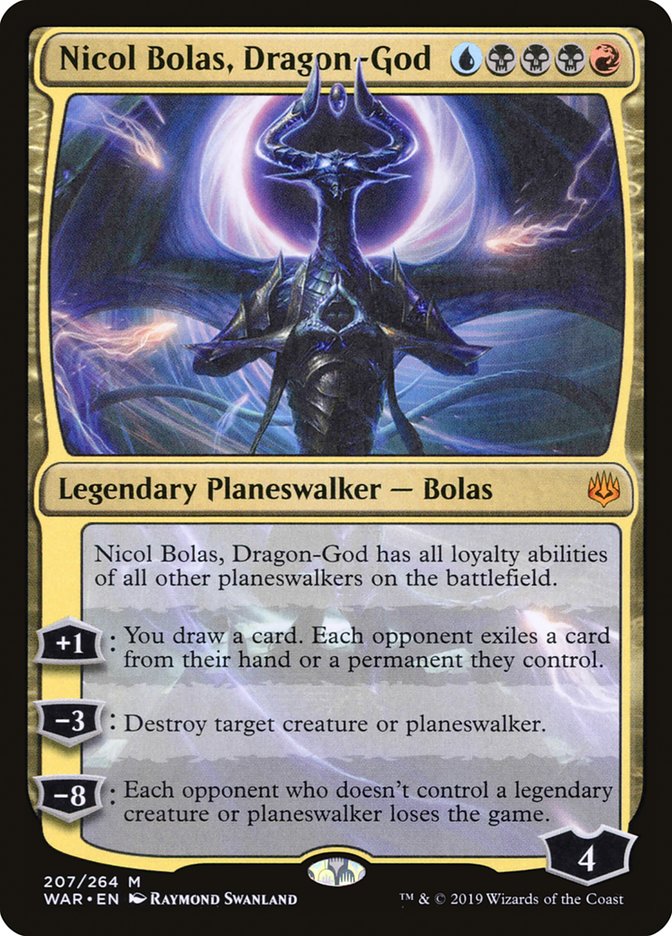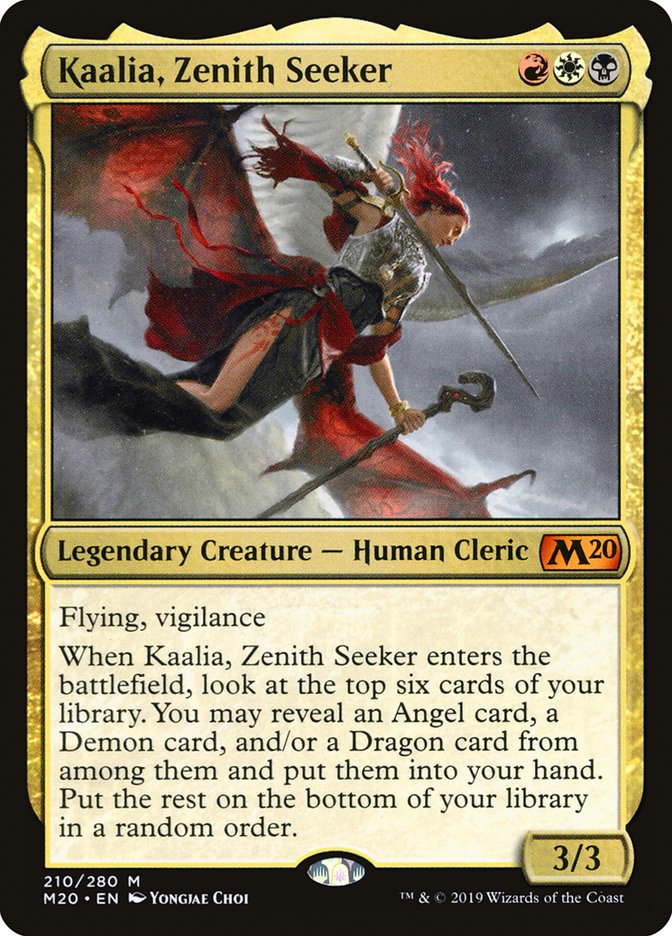Look, I’m not saying Core Set 2020 Standard is the only format that needs a hero.
Let’s be realistic, though. Some formats need a helluva lot more than a hero…
Bant Scapeshift exploded onto the scene the week before last, and this week proved that its success wasn’t a fluke. It’s not that Scapeshift is broken or anything. I definitely don’t want to necro a topic not worth dredging up out of the graveyard. It’s just that when I delve into this archetype, I find the way it faithfully bridges into a massive Zombie end-game alters the already demented rules of engagement of the format.
Field of the Dead is just such a powerful end-game enabler, both as an advantage engine with ramp cards and as a combo-kill card with Scapeshift. While the archetype has started having an impact on the builds of other archetypes folks are running, it doesn’t seem like enough adjustments have been made yet (and not just because it took down the biggest Standard event of the weekend, nearly unchanged, in the hands of Chris Andersen).
Creatures (12)
Planeswalkers (4)
Lands (28)
Spells (16)

Andersen’s list is very much keeping with the most successful builds of last weekend. The primary flex slots have been removal and Andersen made great use of Time Wipe.
It may not seem like a big upgrade over Cleansing Nova, but being able to bounce Hydroid Krasis can be game-winning.
Sideboarding Root Snare instead of Ajani’s Welcome is an interesting change, reducing exposure to opposing Deputy of Detentions and generally just further inching the archetype towards Nexus of Fate decks.
Quite the mirror breaker, Ashiok, Dream Render seems great, even if it’s not as versatile as a lot of our other sideboard cards. Bant Scapeshift is strong enough and popular enough to warrant the extra focus.
With Bant Scapeshift hardly changing up their gameplan, they should be targetable. It’s a powerful strategy, but a predictable one.
Hero of Precinct One may be a somewhat eyebrow-raising big riser this week. After all, what does it have to do with beating Bant Scapeshift?
Well, for starters, it can be an absolutely incredible threat when left unchecked. Bant Scapeshift, as it turns out, has a habit of leaving most threats unchecked. Besides, Hero of Precinct One works way better when its owner can also be the aggressor. Bant Scapeshift tends to yield that advantage.
Going into this weekend, the default Hero of Precinct One deck was Esper, taking advantage of Teferi, Time Raveler; Elite Guardmage; and Teferi, Hero of Dominaria. Sure enough, Steven Byerly Top 8’ed with his update that continues in the recent trend of topping off the curve with a couple of six-drops, like Bolas’s Citadel or Command the Dreadhorde.
These powerful end-game card advantage engines give the deck a trump card for grindy matchups, a way to go over the top when someone keeps killing their threats one-for-one.
Here’s Byerly’s take on the archetype:
Creatures (9)
Planeswalkers (11)
Lands (26)
Spells (14)

The primary concession to Hero of Precinct One comes in the removal suite.
Rather than anything like Cast Down, Esper Hero keeps its removal package gold. Notably, Byerly’s list features zero copies of Mortify, which used to be a ubiquitous staple in the archetype. The three-spot is just so crowded, given how crazy powerful Teferi, Time Raveler and Narset, Parter of Veils are.
I’m still kind of suspicious about the effect this dynamic duo has on the format. Nevertheless, they are certainly a defining feature, so best to keep them in mind, regardless of what deck we may be tuning.
With the format having moved away from Thief of Sanity, and Mortify no longer desirable either, I can’t help but wonder why we’re even playing black as the third color anyway. To that end, I’m really digging Adam Martin’s finalist list, running red instead of black.
Creatures (26)
- 2 Lyra Dawnbringer
- 2 Shalai, Voice of Plenty
- 2 Aurelia, Exemplar of Justice
- 1 Tajic, Legion's Edge
- 4 Hero of Precinct One
- 2 Tomik, Distinguished Advokist
- 2 Feather, the Redeemed
- 3 Elite Guardmage
- 4 Empyrean Eagle
- 4 Lightning Stormkin
Planeswalkers (4)
Lands (24)
Spells (6)

While Feather, the Redeemed and Aurelia, Exemplar of Justice are great cards straight-up, the real technological advancement here is Lightning Stormkin.
Lightning Stormkin is such a sick two-drop threat. It’s not just the mana efficiency (though it is quite mana-efficient). It’s also the tactical advantage against planeswalkers afforded to us by having two points of haste available to us in the air. The air component is especially interesting here, thanks to another interesting gold card, Empyrean Eagle.
Obviously we’re still butting up against the three-spot crowding problem, but the opening of Lightning Stormkin into Empyrean Eagle is great for racing, while also invalidating a lot of chump blockers. I think I’d find room for the fourth Teferi, Time Raveler, though. Notably, Bant Scapeshift being able to present an extremely large number of 2/2s on the ground makes the flying army approach effectively a turn faster than a comparable ground attack (since they can’t use their Zombies to block everything and stabilize).
I appreciate Martin’s dedication to a good curve, sacrificing some powerful threes to make room for a couple of extra twos. Tomik, Distinguished Advokist is a quality body, though always sketchy alongside too many Sulfur Falls and Steam Vents. I could believe it being good enough, though it does make me a little sad that this ability doesn’t actually really help you against Bant Scapeshift. Doesn’t it seem like it should? Would have been nice. At least it keeps Teferi, Hero of Dominaria from untapping lands, I suppose.
I realize it’s not usually the Hero of Precinct One decks where you find a sweeper like Flame Sweep; however, given how long this version is on flying, and how effective of a weapon Flame Sweep can be against Zombie tokens (along with numerous aggro decks), I’d be really interested in trying it in the sideboard here.
While flying has gained in value recently, the keyword I’m trying to build around is flash. Brineborn Cutthroat and Nightpack Ambusher give us such a powerful one-two punch for building a flash deck, and after something of a lull following a strong showing a few weeks ago, Daniel Friis gets the archetype back into the spotlight with his super-counterspell-heavy update to Simic Flash:
Creatures (16)
Lands (23)
Spells (21)

Playing fewer creatures than any previous build I’ve seen, Friis shaved basically everything he could to make room for fourteen maindeck counterspells (to go along with the Frilled Mystic).
That’s just so many counterspells, really capitalizing on the lack of fast aggro decks. This is really a lot of action for slowing down Bant Scapeshift, and this even while making room for a playset of Opts to find even more counterspells. If you’re looking for a tempo deck to take to the next tournament, I would definitely try this style of Simic Flash. If I were playing this weekend, I would run something along these lines (though in my heart of hearts, I’m still hoping to make Angels/Demons/Dragons work…).
While Friis trimmed Spectral Sailors and Merfolk Tricksters, the other popular Spectral Sailor / Merfolk Trickster deck actually took a step closer to Simic Flash. Johnathan Pratt took the trophy home from his IQ with an update to Mono-Blue Aggro featuring Brineborn Cutthroat.
Creatures (19)
- 4 Siren Stormtamer
- 4 Merfolk Trickster
- 4 Tempest Djinn
- 2 Pteramander
- 4 Spectral Sailor
- 1 Brineborn Cutthroat
Lands (20)
- 20 Island
Spells (21)
- 1 Unsummon
- 4 Opt
- 1 Negate
- 3 Spell Pierce
- 2 Lookout's Dispersal
- 3 Dive Down
- 4 Curious Obsession
- 3 Wizard's Retort
Sideboard

His Brineborn Cutthroat is a ninth flash creature, a ninth Pirate for Lookout’s Dispersal, and generally just a solid card for a deck with this many instants.
It does sort of beg the question, though: is there more we could be doing to give Curious Obsession decks some of the advantages of Simic Flash? Or perhaps, should we be making Simic Flash decks with an eye towards what we can pick up from Mono-Blue?
Creatures (18)
Lands (22)
Spells (20)

I don’t think we’re quite there yet, but you see what I mean, right?
Speaking of breathing new life into an archetype, Terren Huck’s third-place Elementals list takes the deck into an even bigger direction, splashing black for Yarok, the Desecrated, really punishing opponents short on removal. For starters, yeah, obviously a 3/5 deathtouch, lifelink body is a thing, sort of. The value, however, is the built-in Panharmonicon.
Yarok being an Elemental means that playing it with a Risen Reef on the battlefield means we’re netting two extra cards (and possibly extra land on the battlefield for building material even harder next turn).
Obviously, Yarok works great with the two loudest Elemental payoffs, but that’s only the beginning in Huck’s list:
Creatures (28)
- 4 Risen Reef
- 3 Yarok, the Desecrated
- 4 Omnath, Locus of the Roil
- 4 Leafkin Druid
- 4 Cloudkin Seer
- 1 Cavalier of Gales
- 1 Cavalier of Thorns
- 4 Thunderkin Awakener
- 3 Scampering Scorcher
Planeswalkers (1)
Lands (25)
Spells (6)
Sideboard

Rather than relying on traditional favorites like Creeping Trailblazer and various small Chandras, Huck really emphasizes Elementals with enters-the-battlefield abilities Yarok can copy.
Scampering Scorcher over Chandra, Acolyte of Flame is partly about finding Yarok and copying the trigger, and Cloudkin Seer is actually kind of a nice target for Omnath counters, given the amount of blocking on the ground, people are doing. Both work exceptionally well with Neoform.
Neoform reveals the reason for the one-one split among five-cost Elementals, increasing the flexibility of what we can turn our Scampering Scorcher into when we’re not just going straight to Yarok. Omnath is just so good, we’ll turn our Cloudkins into it often enough to not even bother with a toolbox (beyond the option to Scorcher).
We’ve been seeing more and more Thunderkin Awakener among Elemental decks as the format has evolved. It’s especially nice with Neoform, but it also just works great with enters-the-battlefield triggers. While it’s a nice card to pump with +1/+1 counters, I like the use of zero Overgrowth Elementals. I just think that card is a little medium, particularly if we’re trying to go way over the top of people (and Yarok is).
Elementals aren’t the only tribe on the upswing (and yeah, Vampires are still kind of number one; they just haven’t changed much). Marauding Raptor continues to give enough raw power to Dinosaurs to keep it in the conversation, while some smart tuning has helped the archetype regain some percentage against a field of Bant Scapeshift and midrange.
Creatures (28)
- 3 Regisaur Alpha
- 4 Ripjaw Raptor
- 2 Drover of the Mighty
- 4 Otepec Huntmaster
- 3 Ghalta, Primal Hunger
- 4 Marauding Raptor
- 4 Rotting Regisaur
- 4 Shifting Ceratops
Planeswalkers (1)
Lands (24)
Spells (8)
Sideboard

Williamson’s list features a playset of Shifting Ceratops, Commune with Dinosaurs for more access to haste, and tons of ways to give haste to his other Dinosaurs:
Haste is most loudly capitalized on by Rotting Regisaur and Ghalta, Primal Hunger, which can be powerful solo but combine to make for some devastating battlefields against opponents light on removal.
Noticing a trend here?
Between Rotting Regisaur and Marauding Raptor, it’s just not hard to get Ghalta onto the battlefield by the fourth turn (frequently with haste). The consistent faster speed against opponents without removal combined with the update of Flame Sweep, makes this a powerful metagame call in the weeks ahead.
Collision // Colossus may not be the most unusual role-player, but it’s a smart one here. The format is definitely sliding towards flyer-heavy decks, and Dinosaurs in particular have a vulnerability there. Besides, the power-boost and trample from Colossus are awesome for helping win a race a turn ahead of schedule. This deck really can’t afford to draw dead cards against matchups where removal is bad, so the flexibility is much appreciated.
Moving forward, I think the format will continue to revolve around Teferi, Time Raveler, with Bant Scapeshift being a major influence on the direction decks are moving. That said, I just don’t believe there isn’t room for major advances in aggro. We’re seeing some Vampires decks here and some Mono-Red Aggro decks there, but I’ve got to imagine there’s room for something else low to the ground. Lightning Stormkin is especially interesting to me there.
I’m also suspicious of the lack of hard control decks. Maybe the threats really are just too diverse, and the three-cost planeswalkers may put too much pressure on us. Still, it seems like Esper, Jeskai, or Azorius Control could really prey on the recent swing towards must-kill threats like we saw so much of recently.
While Nexus of Fate is always going to crop up when people aren’t targeting it, I generally just think Teferi, Time Raveler is too brutal for them to be a consistent winner.
Love the card. It’s hard to get away from Teferi, Time Raveler, though. Maybe. We’ll see.
As I said, I may be piloting Simic Flash at the moment, but it’s Kaalia, Zenith Seeker that I’d most like to make work, if I can figure out how to make her fast enough without playing a ton of spot removal and leaving us with the wrong cards in too many matchups…


